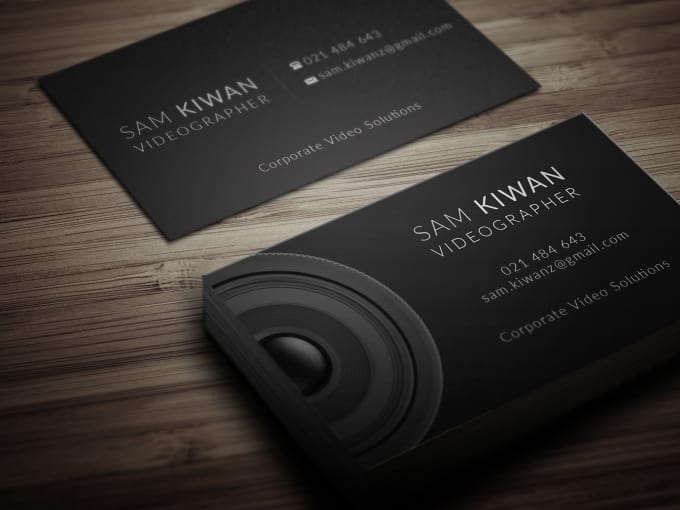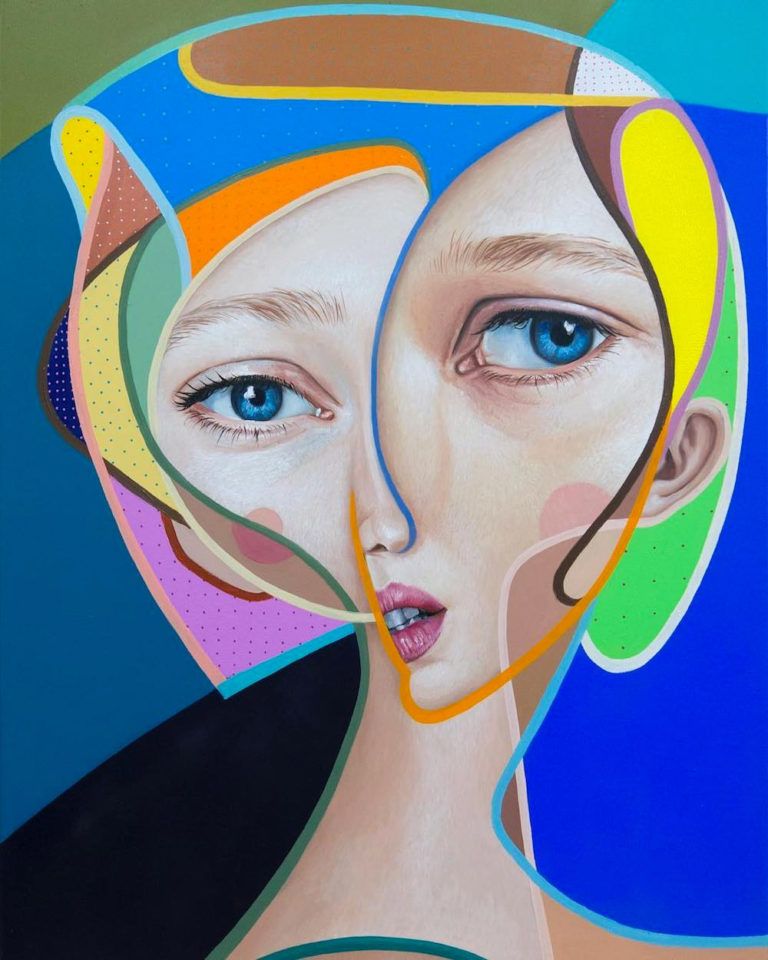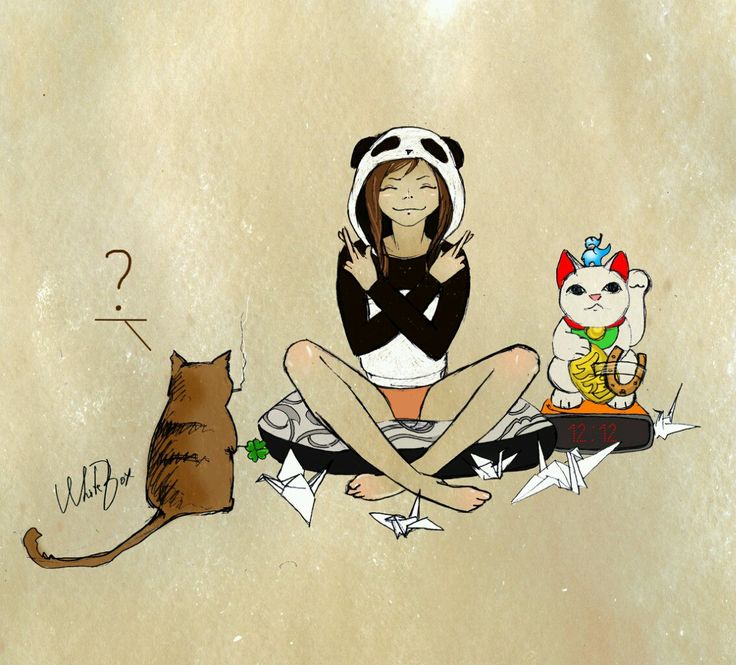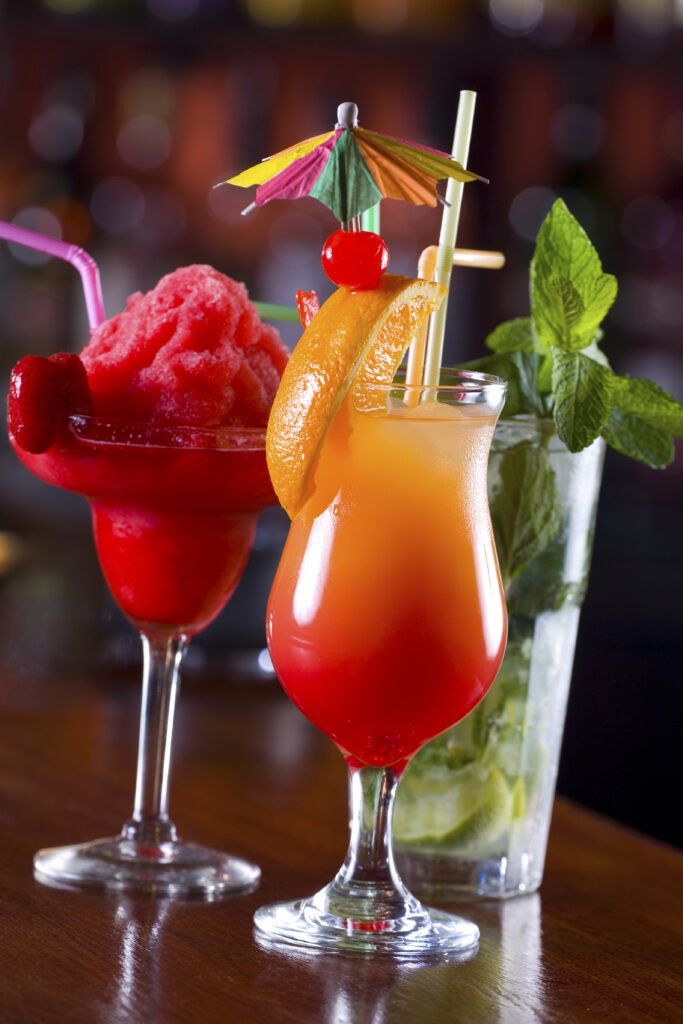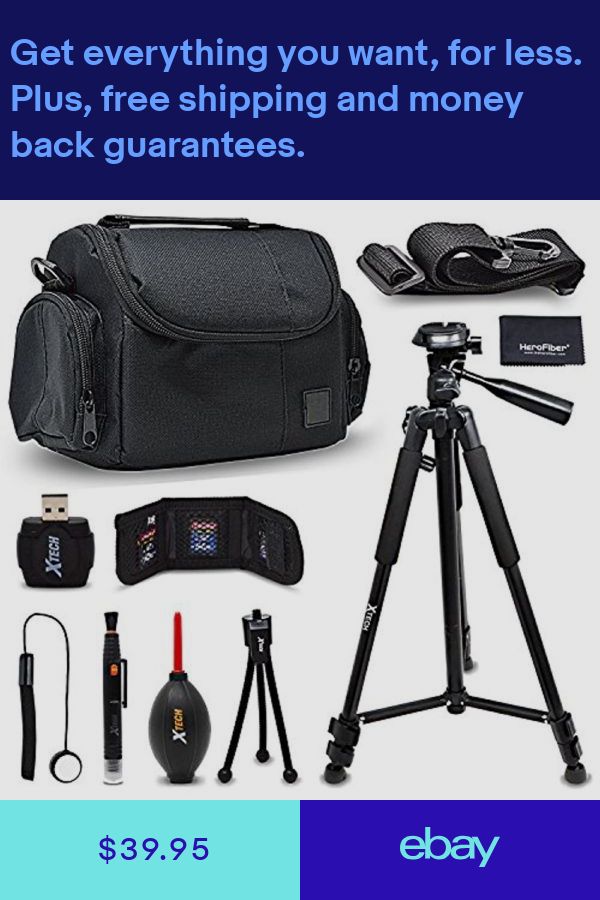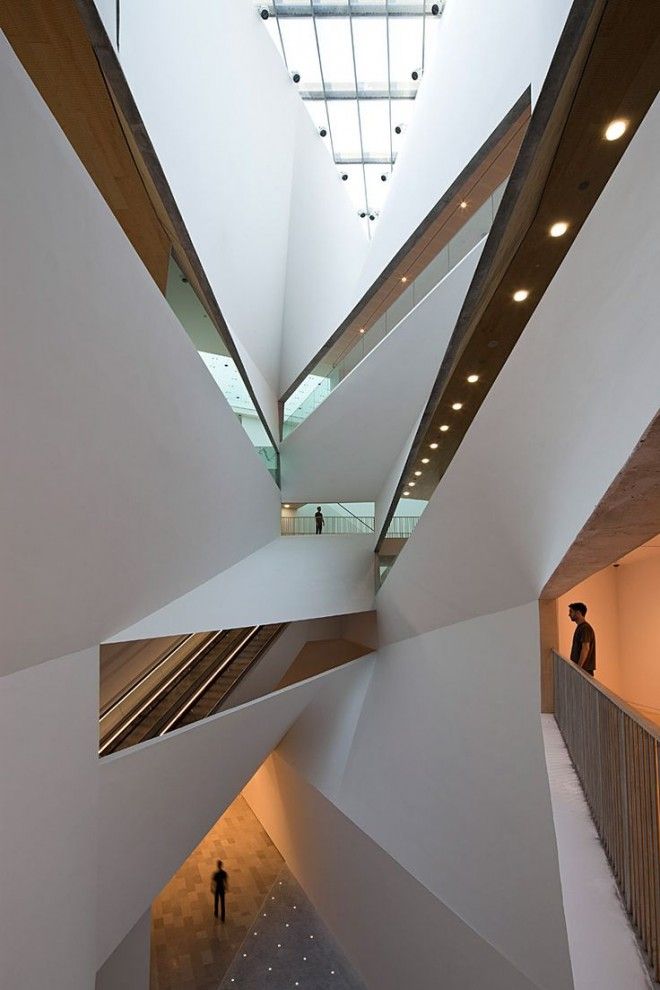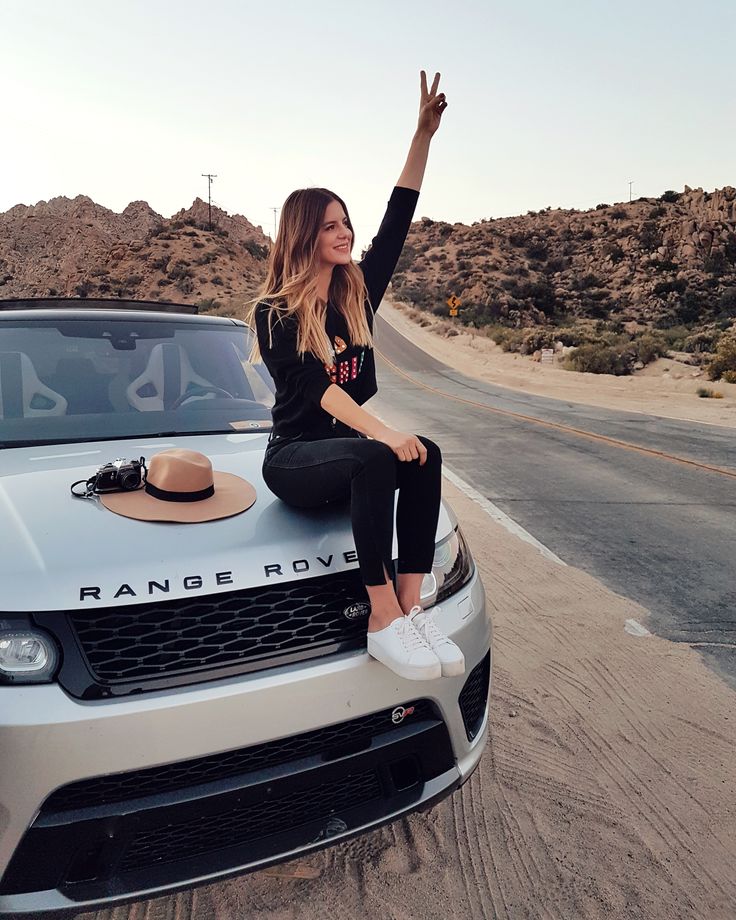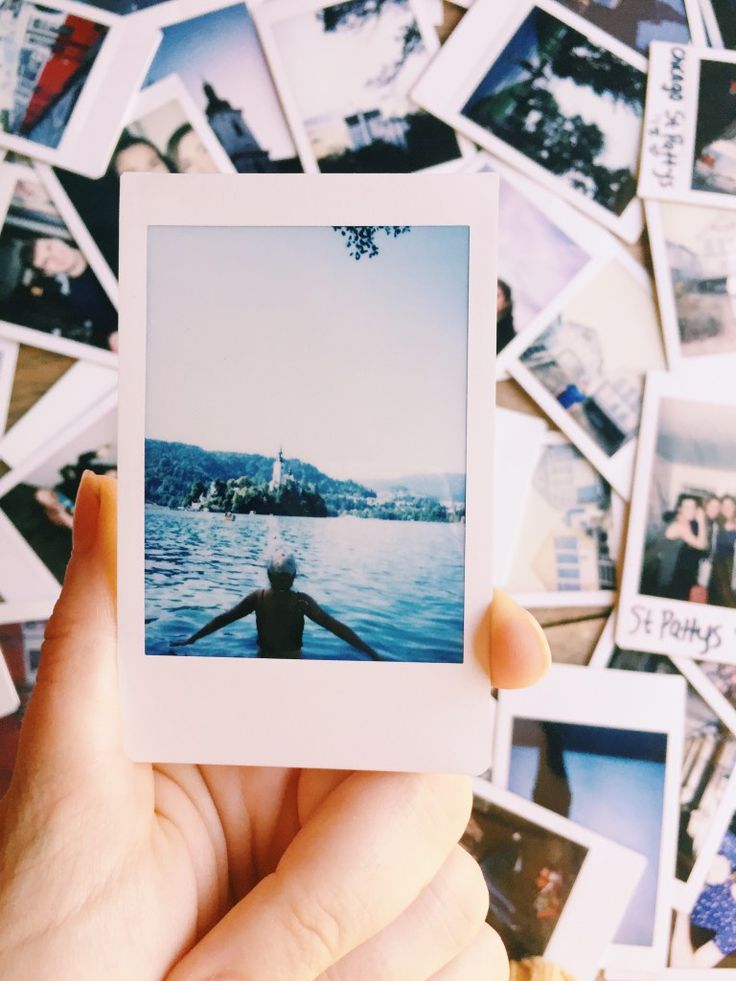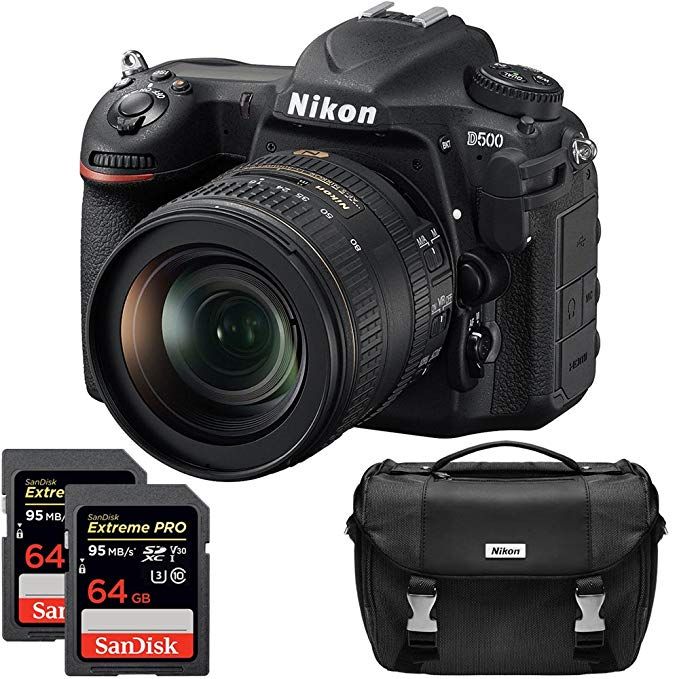Best backgrounds for professional headshots
The Best Professional Headshot Backgrounds
As a business professional, a headshot represents you. It not only shows off what you look like but the type of style and attitude you bring to your work. Before getting photographed, many clients’ common question is, “what’s the best headshot background to use?”. Although there’s no definitive answer, the right headshot background depends on the type of feel you’re looking for.
Why Are Headshot Backgrounds Important?
Even though you might be more concerned about how you look, your headshot background is equally as important.
A great headshot background shouldn’t be too distracting, but still draw the viewers attention towards you. In some cases, the background of your photo can perfectly capture the style and personality of your business.
For example, if you owned a cupcake shop, having a bright and colorful mural in the background would work great.
The bright colors of the mural represent the same fun and bubbly personality of your company.
If you were a mechanic, having a well lit and organized tool bench in the background could speak to your professionalism.
You aren’t just some dingy mechanic; you care about your work and your customers!
Try to think of your headshot as more than a picture of yourself.
Look at it as a way to showcase your personality and the uniqueness of your work. The background you use helps to build your persona.
And that’s why it’s so important!
How To Choose The Right Background For A Headshot
When you really narrow it down, there are two types of backgrounds for a headshot.
A studio background and a natural background.
What Are Studio Backgrounds For?
Studio backgrounds are the most typical headshot background you’ll see. These backgrounds are usually white, grey, or black.
Headshots with solid colored backgrounds are perfect for your most professional aspects of work and online presence.
For example, studio backgrounds work great for linked in, business cards, or advertisements.
Since the background is simple, it draws more attention to what you look like and your message on the advertisement.
What Are Natural Backgrounds For?
Natural headshot backgrounds are anything shot in the real world. There can still be lighting done for the photo, but the background has a little more to it.
It could be against a glass wall, on a trail, or outside a unique building.
Whatever it is, a natural background is a great way to add something more unique to your headshot.
Unlike studio headshots, natural backgrounds all look different. That means your photo is guaranteed to look different than some elses’.
If you’re in a creative line of work or want to express your business personality, this is the perfect opportunity.
Natural backgrounds are best used for your website and social media accounts where your persona shines the most.
The 10 Best Headshot Backgrounds
Now that you know which background type you want let’s go over some ideas for your headshot background.
– Studio Headshot Backgrounds
1. Solid White
The most basic and simple of headshot backgrounds are solid white. If you want a clean looking headshot with no distractions, this is a great option to use.
An awesome white studio background is the Neewer 10X20 Muslin Backdrop. If you’re a photographer or looking to take a headshot yourself, this background will create an at-home studio in no time!
Check Price Online
2. Grey
If you want something a little more unique, opting for a grey headshot background is a perfect idea. With a grey background, you can make your photo feel more inviting and less intense than a white background.
Particularly for headshots, this 10X12 Grey Studio Backdrop is an affordable option for your at-home studio.
Check Price Online
3. Solid Black
For a more cinematic and moody look, a solid black headshot background will do just the trick. With this background, you can get creative with your lighting to create a more captivating headshot.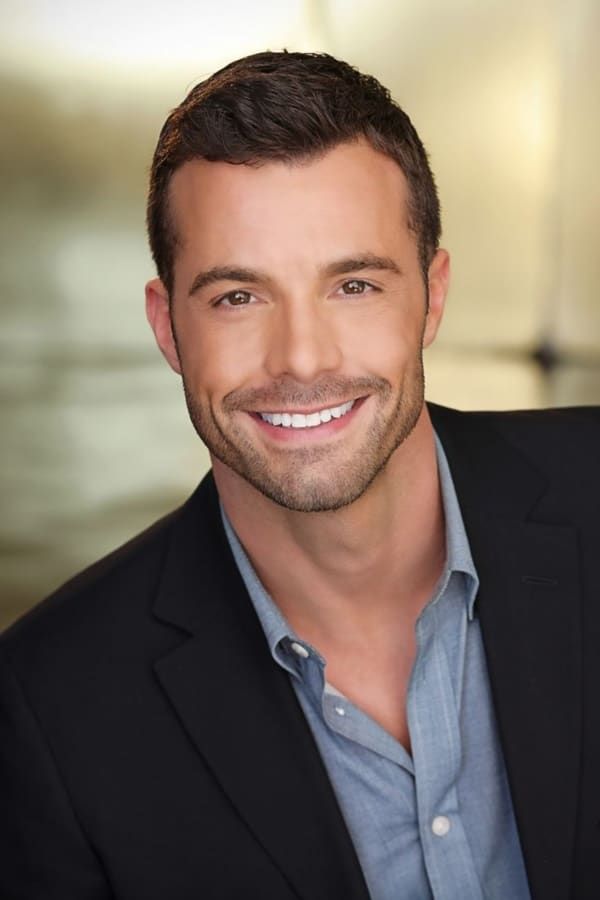
For your at-home studio, the Emart 10X12 Studio Backdrop is the perfect option for this type of headshot!
Check Price Online
4. Solid Color
Maybe you don’t like the shades of whites and black for your headshot background; I totally get it. So why not add a splash of color?
This 5X7 Colored Studio Backdrop comes in 12 different for you to choose from. Now you can add a bit more pizzazz to your headshot photos!
Check Price Online
5. Textured
For the last of the studio headshot backgrounds, you can try a textured look. Rather than having a solid color, a textured background can add a little bit more to your image.
Textured studio backgrounds come in many colors, but this 5X7 Textured Backdrop is a great one to start with!
Check Price Online
– Natural Headshot Backgrounds
6. Woodlands
Heading out into the forest is a fantastic place for headshot backgrounds. Not only does the forest have a ton of unique colors, but there can be some really nice light as well.
Especially if you work outside a lot, a nature headshot background could work perfectly to showcase what you’re all about.
Besides that, in the fall, you’ll find immaculate golden colors you can’t get anywhere else!
7. The City
There are so many unique features in a city, making it the perfect place for a headshot background. Whether it’s on a sidewalk, in front of a unique building, or by an expansive view, it all looks great!
Especially when you work and live in the area, including the city in your headshot background is an easy way to show your roots. It’s easy to see your place of work with a city background, where you live, and the city you love.
All of these are great personality and business traits that can shine through in your headshot.
8. Corridors Or Entryways
Particularly on university campuses, there are tons of unique outdoor corridors and entryways with unique architecture. Even though the background will be blurred, these archways’ subtle shapes look fantastic in a headshot background.
Take an afternoon to explore any cool buildings in your area. You’ll be amazed at how many cool places there are to take your headshot!
9. Your Place Of Work
Like I mentioned before, your headshot should showcase who you are and what you do. There’s no easier way to do that than by including your place of work as your headshot background!
If you’re an artist, taking a headshot in your studio would perfectly capture who you are and what you do.
If you’re a teacher, taking a photo in your classroom would help people immediately identify your line of work.
Using your workplace as a headshot background can be fun and will easily show what you’re all about.
10. Murals
In most places, there are murals all around town. Even if you don’t want to include the whole mural, the unique lines and colors will work great for a headshot background.
Try to find one with colors that represent what you’re all about. If you’re super bubbly and out there, look for something more vibrant and colorful.
If you’re more straight-edged, look for a mural with more uniform shapes and muted colors.
Especially for a website, murals are a great idea if you aren’t sure what to use for your headshot background.
Conclusion
There are so many different things you can use as a headshot background. The main decision you need to make is whether you want a studio background or natural background. Both are totally viable options, but create very different feelings to your headshot.
If you have the time, I would suggest getting a studio version and a natural version for your headshot. That way, you have more options depending on the context you’re using your headshot in.
Ultimately, choose a headshot background that feels the most natural to you. Something that you think looks great while still suiting your profession.
Want more articles like this? Subscribe to my weekly newsletter for more photography, and photo editing tips delivered straight to your inbox!
– Brendan 🙂
Headshot Background Guide 2021
Headshot Background Guide 2021
Are you a finance professional? Author? Actor? Marketing consultant? Medical residency applicant?
Different backgrounds work for better for certain professions than others. In this article, we'll outline our top recommendations for each headshot background based on what you do so you don't accidentally pick a backdrop that doesn't make sense!
In this article, we'll outline our top recommendations for each headshot background based on what you do so you don't accidentally pick a backdrop that doesn't make sense!
First, take a look at the images below. Click on an image and use the arrow keys to skip through the photos and see explanations of the backdrops and why they work for each particular photo. Then, scroll down to read the article.
What is the Best Background Color for a Headshot?
There is no best color because it depends on what you're using the shot for and what industry you're in. This guide will show you what backdrop will work best for each industry and use.
Your Professional Headshot Background Must Work for Your Goals
Your background MUST support the type of work you do or what you're using the image for – while also being complimentary to your skin tone, clothing, and eye color.
For instance, if the backdrop you choose is bright and colorful but you work in a formal industry and for a conservative company, the shot won't make sense and might confuse viewers (or your company might require you to have the photo retaken).
Generally speaking, brighter/colorful backgrounds tend to work better for more casual and relaxed industries, and darker backgrounds work better for conservative/formal industries. For actors, we have a completely separate guide that goes into depth on the best colors for headshots.
Here's an in-depth guide on clothing to wear, and about halfway down the article is a section on color-matching so you can learn which colors compliment each other.
Formal Business Portraits
Dark Gray or Dark Blue
| Formal business portraits are traditional, dark backdrop shots (blue, gray, or black). Typically, people in the following fields will get a traditional business portrait:
These professions generally require more formal attire than others, and therefore using a darker backdrop will bring across the formality expected in the industry. Learn more about what to wear by clicking here. |
Relaxed Professional Headshots
Light Gray, Light Blue, or Outdoor
Gray Headshot Background | Outdoor Headshot Background |
Using an off-white or outdoor background for headshots leads to a more relaxed and approachable shot. Your expression is of course extremely important to how approachable you look, but the feeling of the image as a whole must also show more approachability and warmth for certain professions. A lighter background or outdoor shot tends to help with this.
People in the following fields will benefit from these types of shots:
- Actors
- Authors
- Broadcasters
- Counselors
- Designers
- Filmmakers
- Fitness Trainers
- Hospitality & Tourism Directors
- Journalists
- Life Coaches
- Non-Profit Workers
- Politicians
- Real Estate Brokers
- Retailers
- Sales People
- Therapists
- Teachers
When shooting against a lighter or more colorful backdrop, it's totally up to you how formally you want to dress. The formality of your clothing can be contrasted by the more relaxed background, or you can do some shots in a more formal outfit and some in a more casual outfit so you have some of both.
The formality of your clothing can be contrasted by the more relaxed background, or you can do some shots in a more formal outfit and some in a more casual outfit so you have some of both.
We strongly recommend wearing a suit jacket or sport coat if you're a guy, unless your shirt is well-fitted and not a very pale color. And remember that it's better to wear a light blue shirt instead of a white one if you are planning to do shots without a tie. Learn more about what to wear by clicking here.
No-Background Business Portraits
White
Headshot With White Background
| We usually recommend that anyone in technology have at least a few shots on a white background. People that work on the internet or with computers, or those who have their own website can benefit from a shot that appears to have no background behind them. Because a white background can easily be removed and digitally swapped with something else, the image can be very versatile. Besides people in tech, there are also other fields that should have a white background, just for the clean and crisp feeling it provides:
In-reality, anyone who starts their own business should have at least a few professional shots of themselves on a white background because of its versatility. |
Stylized Portraits
Indoor or Outdoor
| Stylized portraits are much more creative than standard headshots. People who most-often need stylized portraits are musicians, artists, and dancers/models but anyone can benefit from one, especially if you are running your own business and want some different pictures (full/half body shots) to put on your website. Some examples of stylized portraits would be a photo of you sitting at a computer desk looking like you're working, or one of you reading a book on a bench outside or walking along the sidewalk, or even a shot of you standing in front of the courthouse building if you're a lawyer. See some creative portraits here. |
Online Dating Pictures & Personal Use
Outdoor
| Using a professional photo for online dating and personal use is becoming increasingly common these days. We generally recommend that these shots be taken outdoors with natural light and backgrounds so they don't look staged. People using their images for social media should also opt for a white background if they want their image to be more versatile. See the section above called "No Background Business Portraits" for more information. |
Graduation Pictures
Indoor or Outdoor
| Depending on the formality of the graduation photo you want, we have taken indoor and outdoor shots. Typically, an indoor graduation photo would be a formal portrait against a dark gray or blue backdrop. |
Medical Residency Application Photos
White or Gray Backdrops
| ERAS images must fit very specific requirements, so we have created an entire page dedicated to our Medical Residency Application Photography. We recommend shooting on a white or light gray backdrop because a lighter background is statistically more likely to be clicked on by faculty members reviewing your application. Learn more about our Medical Residency Headshots here. |
Actor & Model Headshots
No Specific Rules
| Actor headshots are a huge branch of photography, and some photographers spend their entire lives solely dedicated to shooting headshots for actors. They can be done on white, light gray, dark gray, black, outdoor, and just about any other backdrop you can think of! For that reason, we've created an entirely separate page you can view here: Actor Headshot Backgrounds: The Ultimate Guide |
General Headshot Background Tips (and things to avoid)
- Avoid distracting elements in the backdrop, such as bright lights, random streaks of color, or sharp lines going across the image.
 The background should never be distracting and draw your eye away from the face of the subject!
The background should never be distracting and draw your eye away from the face of the subject! - The background must be extremely blurred for outdoors shots. If you can see detail and you can "tell" what's behind you, it means the background is distracting and shouldn't be used for a professional headshot. For a non-headshot (such as a stylistic portrait or full body shot), seeing more of the backdrop in sharper focus is fine, but for true "professional headshots," the background should not draw the eye at all.
- You must "pop" off the background. The photographer can use lighting tricks or you can wear a completely different color than the backdrop to make sure you don't blend in with it. If you do, your headshot won't look high-end and might make people think you didn't invest much money into it (meaning they'll wonder how serious you are about your career).
- Make sure your headshot matches any required company specs. If you work for a company that has certain requirements, be sure to ask them those before scheduling a shoot! Your photographer likely won't know what those specifications are unless they've worked with your company before.

- A note on Murals & Graffiti Backgrounds: We generally advise against shooting with murals unless they are specifically needed to get across a story or idea. As a rule of thumb, headshots are about YOU, not the background, so stay away from anything that draws too much attention to itself unless you're looking for a Stylistic Portrait.
- How to pick the right type of "blurred" backdrop: Generally, when a photographer blurs out a real-life setting behind you, there are four options, and each gives off a slightly different feeling:
- Interior Office or Home: Blurring out the interior of a space can work well as long as the space is neat and interesting-looking. It can be a nice way to give off a professional – yet casual – vibe!
- City Settings: Using a skyline, street, cars, or even a building as your headshot background can look modern and sleek, especially if it's blurred out a lot. Be careful though, because city backdrops can quickly become distracting if they're not blurred enough.

- Greenery & Natural Settings: Real estate agents and actors often request greenery photos, with plants and nature blurred out in the background. Since nature is generally not distracting (the way a city might be), you don't need to blur out the background as much to still get a highly-polished photo.
- Walls & Pathways: As long as they're not too distracting, angling yourself along a wall or walkway can create a great look for a headshot. There are no particular industries that work better with these backdrops (except we don't recommend them for actors), so if there's time and you want to try it out, go ahead!
In Summary
At the end of the day, a great headshot is not about the photography, but about you. Avoid working with photographers who require you to shoot on specific backdrops or don't give you a say in what your final photo looks like – headshot photography should be a team effort.
Key takeaway: The backdrop should support you and the work you do, and should never draw the eye away from your face.
Here's a guide on how to find a great headshot photographer in any city.
Further Reading:
If you enjoyed this article, chances are you'll enjoy these too:
- Professional Headshot Background App + How to Take Your Own Headshots
- What to Wear in Headshots
- How to Prepare for a Headshot Session
Portrait photography: choosing the right background
08/10/2022
Despite the fact that the background plays a rather auxiliary role, it significantly affects the final result. The best backdrops work in tandem with the subject, allowing it to be bright for more daring occasions, or remain subdued when style calls for it. To make sure your backdrop fits perfectly with the mood of your shoot, let's take a look at the various backdrop options. Different colors have hues that can change the mood of portraits, especially depending on the color of the hair, eyes, clothing, etc..jpg) your subject. By understanding how background color can affect your portraits, you can better control the mood of your photos.
your subject. By understanding how background color can affect your portraits, you can better control the mood of your photos.
Select background color
Choose the best combination of texture and background color.
Choose the color of the background to match the lighting and the mood of the shoot, as well as the colors of your wardrobe.
1. Match with your goals
The most important factor in choosing a background color is the purpose of the photograph. For example, business shots should use a neutral, standard background color such as white, black, gray, or brown. In order to guide the photographer, it might be worth creating a moodboard so you can clearly define your goal. The right backdrop can add personality and uniqueness to your photo shoot.
2. Consider the material and color of the background
If you're planning on using a traditional backdrop for your photo, there are several options you should consider. As you can imagine, photo backdrops vary in size, color, quality, and cost, so there's a lot to consider. However, in this article, we will look at the choice of materials for the background, depending on their effect on color and the purpose of your shooting. Here is a brief overview of some of the options available.
As you can imagine, photo backdrops vary in size, color, quality, and cost, so there's a lot to consider. However, in this article, we will look at the choice of materials for the background, depending on their effect on color and the purpose of your shooting. Here is a brief overview of some of the options available.
Seamless Paper
You've probably seen seamless paper rolls used in fashion portraits and product shoots. They are relatively easy to use and provide a portable alternative to walls. Seamless paper allows photographers to create a clean image with smooth transitions while focusing on the subject. While the most popular colors are black, white and grey, you can choose from dozens of colors to suit your purposes. The best part is that if the paper gets scuffed, you can easily roll out a few more sheets and cut off the unwanted part.
Vinyl
For photographers looking for a durable, flat backdrop with a matte finish that doesn't reflect light, vinyl may be the best option. It is important to remember that, unlike seamless paper, vinyl is heavier and therefore more difficult to move and hang in different places. However, for studio environments, vinyl is ideal, especially for business portraits.
It is important to remember that, unlike seamless paper, vinyl is heavier and therefore more difficult to move and hang in different places. However, for studio environments, vinyl is ideal, especially for business portraits.
Muslin
Another lightweight and highly portable option is the muslin backdrop, made from 100% densely woven cotton. You can choose such a background in various solid and textured colors. Due to the texture of muslin backdrops, lighting plays a big role and they most likely won't provide the consistency that vinyl backdrops provide.
Hand-painted canvas
Annie Leibovitz regularly uses hand-painted canvases for portrait backgrounds. They are coated with multiple layers of paint to create a rich texture and provide an elegant atmosphere in which to display your subject. The cost of hand-painted canvases varies, although they are usually expensive, the results can justify the expense.
3. Match the background color to the lighting and mood
Match the background color to the lighting and mood
As I mentioned above, color greatly affects the mood of a photo. The same is true for lighting. Here's a quick look at some of the color options and how they can be used to match lighting and mood in portraits. These tips apply to the dominant color backdrops you find in a photo studio, and are not limited to hanging backdrops.
White
White is the most popular background color. It is clean and distraction-free and is ideal for bright, light and airy photographs. White backgrounds go well with any color of clothing, while the neutral color can change depending on the lighting.
Black
Black backgrounds are ideal for strong, professional portraits.
Depending on the lighting, they can add a touch of elegance to photographs as well as a touch of mystery. This classic background color serves as a neutral solution that will always make you the center of attention.
Gray
Neutral, gray background will draw attention to you, minimizing the number of distractions. Photographers often resort to gray backgrounds for fashion and product shots.
Red
Perhaps more than the other colors on this list, red needs to be treated with care. People often associate red with love, energy and passion, and it is even used in fast food establishments to induce hunger. On the other hand, red can also be associated with aggression. This is undoubtedly one of the boldest choices on this list and should be used rarely and always with intent.
Yellow
When you think of yellow, you most likely associate its brightness with happiness and energy. As a background color, yellow is definitely upbeat, making it a great option for children's portraits.
Green
We often associate green with the earth and nature. Various shades of green can have a calming effect when used as a backdrop. Dark shades of green, however, have other connotations such as respectability and the pursuit of wealth. In the latter case, using an effective on-camera flash and low exposure can greatly improve the portrait.
Dark shades of green, however, have other connotations such as respectability and the pursuit of wealth. In the latter case, using an effective on-camera flash and low exposure can greatly improve the portrait.
4. Consider the combination of your wardrobe and background color
Whatever combination you choose, you need to consider color theory and be aware of the impact on the image that the choice of wardrobe color in contrast with the background color will have.
I hope you found these tips on how to choose the right background color helpful. Due to the variety of options available, from colors and textures to background materials, choosing the best option can sometimes seem daunting.
At JustBusiness Studio, we have a large selection of backgrounds to implement any of your ideas. Also, we will be happy to advise you and share our experience.
The result of our cooperation will be the perfect photo session in the style you need.
what to wear and DIY tips • BUOM
Professional portraits give you an idea of who you are in the business world and can help you in several areas of your career. In this article, we'll explain everything you need to know about professional headshots, including how to take a professional headshot with your own hands and when to hire a photographer, as well as answering some frequently asked questions.
What is a professional headshot?
A professional headshot is a photo you use to create your personal brand. resume infographics and job sites. Professional shots usually focus on the upper body, such as the head and shoulders. Your professional portrait often creates the first impression of you with colleagues and clients.
What to Wear for Professional Headshots
When taking a professional headshot, you should wear business-appropriate clothing that accurately reflects who you are as a professional. Choose clothes that you would feel confident in during an interview or meeting with a client. For example, a lawyer might wear a business suit, while a football coach might wear a team jersey or sportswear.
For example, a lawyer might wear a business suit, while a football coach might wear a team jersey or sportswear.
The goal of any professional headshot is to draw attention to your face. With this in mind, opt for simple cuts and solid colors. If you choose to wear jewelry, keep it minimal so it doesn't distract.
How to take professional headshots with your own hands
Follow these steps to take your own professional portraits at home:
1. Prepare for your photo shoot in advance
Be sure to prepare for your photo shoot a few days in advance. Take care of healthy skin care, drink water, eat healthy food and get plenty of rest. Also, plan for several clothing options. This step should help you look and feel your best when it comes time to take your picture.
2. Ask for help or use a camera stand
Ask a friend or family member to take a professional headshot of you or use a camera stand. You should not use the "selfie" method as it can make you look uncouth and unprofessional. If you don't have a camera stand, you can also lean your camera against a stable surface such as a table, shelf, or books and use the timer setting.
If you don't have a camera stand, you can also lean your camera against a stable surface such as a table, shelf, or books and use the timer setting.
3. Choose a simple background
Choosing the right background for your professional portrait is very important to keep the focus of the photo on you. You should try to find a neutral background such as a solid wall, a brick wall, or a neutral outdoor setting. Don't let the clutter in the office or the busy outdoor landscape be the backdrop of photography.
4. Use a natural light source
Try to minimize artificial lighting. Instead, use natural light sources. If you are taking the photo indoors, stand next to a large window, not in front of it. If you are outdoors, try to find a well-lit area where the sun is not directly in your eyes or behind you. Once you have found the background and light source, position the camera between you and the light source.
5. Use the rear camera
If you are using your smartphone for professional headshots, it is important to use the rear camera. A rear-facing camera often has features that help you take better quality photos than a front-facing camera.
6. Take Multiple Photos
The best way to get a great professional headshot is to take multiple photos in different outfits and poses. Take photos with a smile and at the same time seriously. By creating a series of expressions, you will have a variety of photo options to choose from. The best professional portrait is the one that most faithfully reflects your personality and brand.
7. Use photo editing software
Several photo editing applications and programs can fix minor problems with your photo, such as brightness and contrast. You should also crop your photo in a way that focuses on you and not on the background or other details.
Read more: 12 Tips for Great Headshots
When to Use a Professional Headshot
You should use a professional head shot every time you need your photo to show who you are as a professional. Professional shots are used frequently, so it's important to have them handy for easy distribution.
Professional shots are used frequently, so it's important to have them handy for easy distribution.
Some examples of when you might need a headshot include:
-
Social media profiles, including job sites.
-
Business cards
-
Summary
-
email accounts and signatures
-
About us pages of company websites
Having a professional photo to use on these occasions is essential to your brand's professionalism.
Pro Headshot Tips
Here are a few extra tips to keep in mind about pro headshots:
Save your headshot in multiple sizes it matched a larger or smaller frame or different specifications of a social media profile photo. Maintain photo quality - avoid unnecessary pixelated or blurry images - by saving your image in multiple formats.
Learn more: 10 types of image file formats
Keep your headshot up to date
Your professional shot should always accurately reflect how you look at the moment. People change their appearance all the time - losing and gaining weight, changing hair color and growing facial hair. Be sure to take photos at least once every two years to most accurately reflect who you are today.
People change their appearance all the time - losing and gaining weight, changing hair color and growing facial hair. Be sure to take photos at least once every two years to most accurately reflect who you are today.
Frequently asked questions about professional headshots
Here are some frequently asked questions about professional headshots:
How much do I have to pay for professional headshots?
If you decide to go broke and not take your own headshot, you can always hire a photographer. While most photographers charge per session and their rates vary by experience and location, some are charged by the hour.
What makes a good professional headshot?
The characteristics of a good headshot include:
-
Your face in bright light that does not cast heavy shadows.
-
You seem friendly and experienced
-
It shows your personality
Should I take a professional headshot?
If you know a great photographer and feel more comfortable with them than with professional headshots, the cost can be justified.
 You'd normally want to wear a full suit and tie, but stay away from black jackets as they can sometimes look too dark against these dark backdrops. A dark gray or navy will work better. Remember that a nice smile can help relax the shot a bit so that it doesn't feel too formal or stiff.
You'd normally want to wear a full suit and tie, but stay away from black jackets as they can sometimes look too dark against these dark backdrops. A dark gray or navy will work better. Remember that a nice smile can help relax the shot a bit so that it doesn't feel too formal or stiff. A white background itself will match almost any website, but if your web developer removes you from the background, you can even put yourself in front of another image (called compositing). You can keep the transparency information in the file so it can be placed on all different backgrounds whenever needed.
A white background itself will match almost any website, but if your web developer removes you from the background, you can even put yourself in front of another image (called compositing). You can keep the transparency information in the file so it can be placed on all different backgrounds whenever needed. Anyone can use them, from financial executives to painters. A stylized portrait is a shot usually taken outdoors or against a backdrop with stylized lighting in order to tell a story or get a feeling across. The difference between a stylized portrait and a headshot is that a stylized portrait is more about the photography than the expression alone. It is most often used for people who already have a professional headshot and want something totally different and unique.
Anyone can use them, from financial executives to painters. A stylized portrait is a shot usually taken outdoors or against a backdrop with stylized lighting in order to tell a story or get a feeling across. The difference between a stylized portrait and a headshot is that a stylized portrait is more about the photography than the expression alone. It is most often used for people who already have a professional headshot and want something totally different and unique.
 An outdoor graduation photo is more fun and natural, so it's really up to you based on your preference.
An outdoor graduation photo is more fun and natural, so it's really up to you based on your preference.